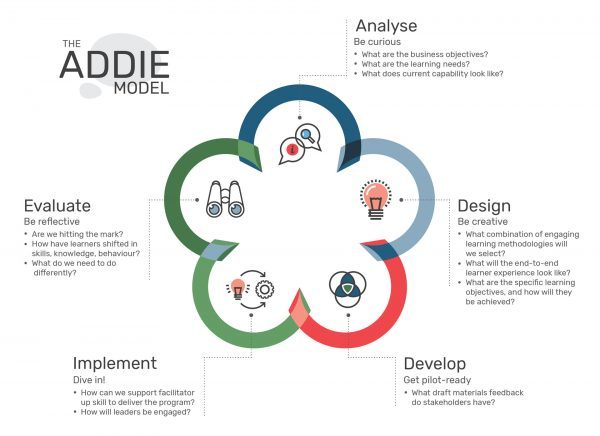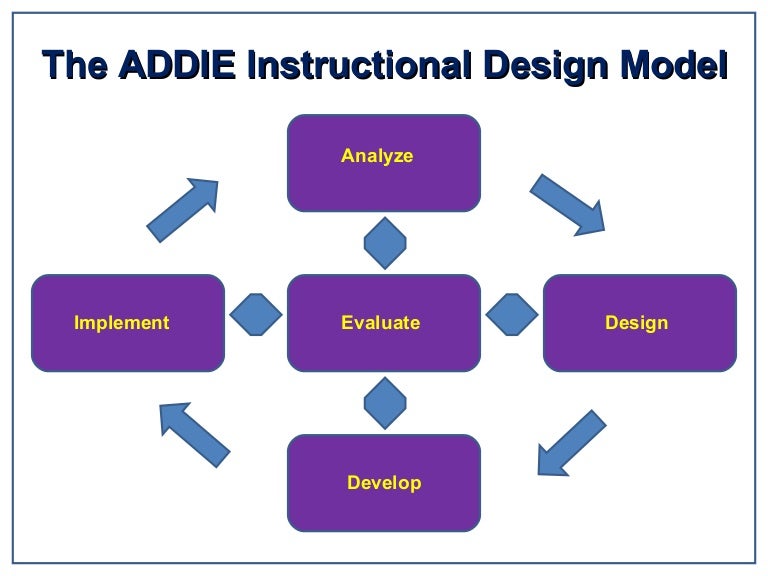Table Of Content

The biggest drawback of going through the ADDIE model process is its speed, or rather, the lack of it. The output of the previous step serves as the input for the next step. This approach takes a long time, during which the learning and content needs may change. This can lead to a misfit between the end product and the reason why the process was started in the first place. In the Analyze phase of the ADDIE process, the first task is to identify the problem you’re trying to solve.

Learning Experience Design
It is one of the earliest and most popular instructional design models around. It’s popular in part because it provides a clear set of steps that anyone can follow when looking to develop learning programs. Consider the benefits and drawbacks of the ADDIE model and other instructional design models before choosing the right one for your project. With careful planning and preparation, you can create effective learning experiences that meet the objectives of your course or training program. The ADDIE model is used as a systematic framework for instructional design, guiding the process of creating effective learning and development programs.
SAM model
While not every training program requires individual assessments, you should have a strategy in place to measure its impact and track its value. Detailed analysis saves time and money later in the process by improving the training program’s impact. Organizations need to continually develop their employees with additive training programs. Therefore, to compete in today’s marketplace, you require a talented and up-to-date workforce.
Learning Design and Technology Graduate Certificate
Manhattan College to Offer Two New Online Master's Programs - Manhattan College News
Manhattan College to Offer Two New Online Master's Programs.
Posted: Thu, 13 Aug 2015 07:00:00 GMT [source]
AnalysisIn the analysis phase of the ADDIE model the instructional problem is identified. The instructional goals, success metrics, and overall objectives are also established. Information regarding the learner such as the learning environment, preferences, demographics, and existing knowledge and skills are also identified during this phase. It is called “development” for a reason, though, and the outcomes of this step will evolve during the process. Therefore, you should be prepared to try multiple approaches to determine the content and delivery that best fits the target audience. Also, always double-check the content’s accuracy and look at the course as a whole to ensure it flows naturally.
What Is The ADDIE Model?
It’s equally important to decide where it will be hosted and what software and tools you will need (e.g., video conferencing software like Zoom, vendor’s platform, or an LMS). Based on all the information gathered in the Analyze phase, you can also map out the resources required for the training. This includes the number of training hours, duration, required budget, facilities, and additional information.
Systematic means a logical, orderly method that identifies, develops, and evaluates a set of planned strategies for attaining project goals. Specific means the team must execute each element of the instructional design plan with attention to detail. The design phase may involve writing a design document/design proposal or concept and structure note to aid final development.
How to use ADDIE model: Best practices
Develop your graphic communication and visual design strategy understanding to help you design solutions to real-world problems. Students learn how to apply both conceptual and technical approaches to design problems. That said, a degree is necessary in some cases—particularly if you want to work with certain educational institutions or governmental agencies. Typically, they require a master’s degree rather than a bachelor’s degree or a certificate. If you are looking for instructional design jobs, mastery of ADDIE is a common attribute on job descriptions. One unique feature of the ADDIE model is that it can be used as a continuous cycle.

While perhaps requiring additional time and examination, ADDIE goes further to understand the goals and outcomes of new learning and development courses. The development phase is probably where you will spend most of your time when creating a new learning program. Once you have alignment and approval on the blueprint for your design, you’ll likely move it to a storyboarding tool and start adding content to the course. This phase is best served by organizing client calls and team meetings. In this ready-to-use canvas, you can collect essential information from your initial needs analysis. At every subsequent step, you should be designing, developing, and implementing a training program that responds directly to these needs.
In the ADDIE model, each stage must be carried out in order and carefully considered before moving on. Reflection and feedback at each stage ensure continuous improvement. This is also where you choose the look and feel of the course, which includes fonts, colors, and other design elements that reflect the learning environment culture. After all of these elements are determined, you’re ready to create storyboards so you can see the big picture.
There are many models to evaluate the effectiveness of the module, the most widely used being the Kirkpatrick 4-level model. Due to these criticisms, there has been a shift over the years from relying on ADDIE’s more linear processes to utilizing more agile ID models such as SAM and rapid prototyping. Because of its simple framework, today’s organizations still find parts of the ADDIE model useful and may choose to pull out phases and then adapt them for their purposes.
Your job in the Development phase is to bring those content ideas to life. This means laying out the content visually, creating graphics, recording videos, carefully selecting fonts and colors, building the course in the eLearning authoring tool. Anything that has to do with creating the actual end-product for your learners.
Details are important, but with the right process, multiple inputs can be wrangled into an engaging eLearning course that meets the needs of your learners. In short, it holds immense potential to be your reliable sidekick in the world of instructional design! ChatGPT is an effective tool that is capable of undertaking multiple tasks with efficiency. Instructional designers tend to think content first and action second.
There is no such thing as an instructional design “certification” (AKA proof that you meet industry standards). Now, many IDs begin their careers as teachers or work in similar roles where they’re helping people learn. These are valid and useful backgrounds for getting into instructional design without having to get another degree. In this stage you need to make sure that you complete all your logistical requirements and that you adequately up-skill your trainers or facilitators.
The ADDIE model retained this five-step feature, and included many sub-stages within each of the five broad phases. Due to the hierarchical structure of the steps, one had to complete the process in a linear fashion, completing one phase before starting the next. The implementation stage focuses on the delivery of the training and project management.

No comments:
Post a Comment